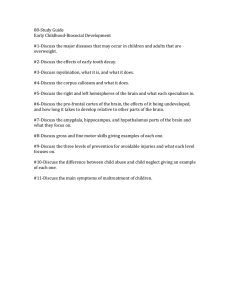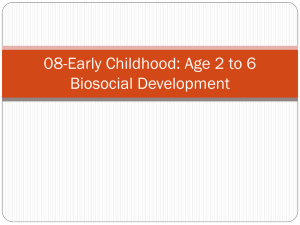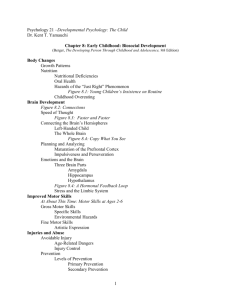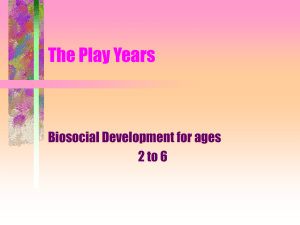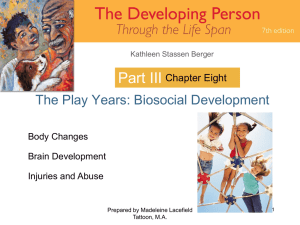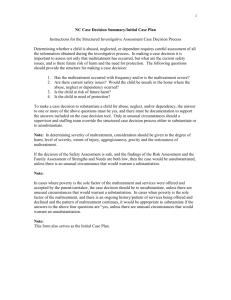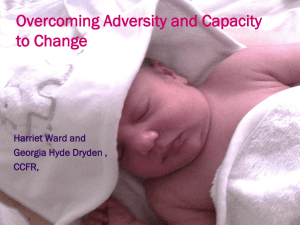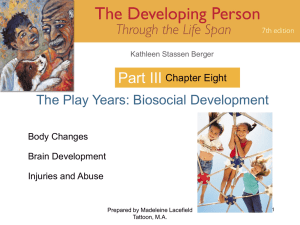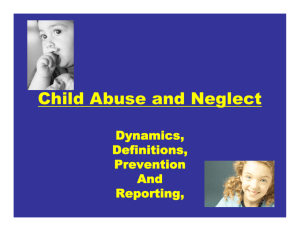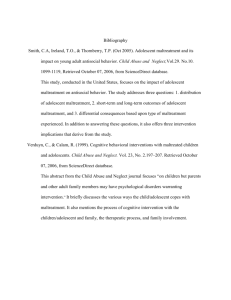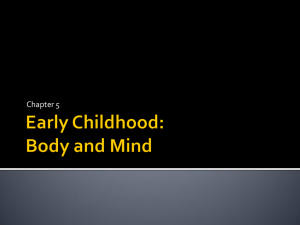Early Childhood Biosocial Development: Ages 2-6
advertisement
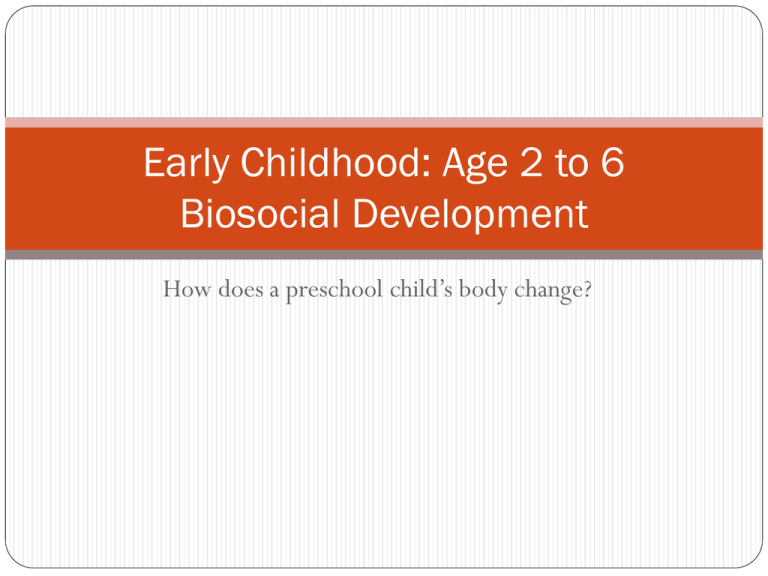
Early Childhood: Age 2 to 6 Biosocial Development How does a preschool child’s body change? What happens when children grow? Body slims down – taller & thinner Center of gravity lowers Enables swinging, gymnastics, etc. 2 years old 6 years old How does nutrition effect children? Overweight children = overweight adults Diabetes Heart disease How do cavities & gum disease effect children? Early tooth decay = most common disease in young children in developed countries Harms permanent teeth Jaw malformation, speech Overall health Do you remember? What body changes do children go through from 2 – 6 years old? What is the effect of being overweight in young children? What is the effect of poor dental hygiene in young children? What about brain development? Myelination Myelin coating of axons Speeds brain processing Focused on the motor and sensory areas Corpus callosum Connects right and left hemispheres Increases coordination Increases communication between both sides of the brain Lateralization Each side specializing Left hemisphere controls right side Left is language & speech Left is logical Detailed analysis Detail focused Right hemisphere controls left side Creative Emotional Big picture focused All thinking required both sides of the brain Prefrontal cortex “Executive” brain Planning, analyzing, prioritizing Immaturity = Impulsiveness & tendency to persevere (keep repeating) E.g. “Are we there yet?” Longest period of development Matures during adolescence Do you remember? What does myelination do? What does the corpus callosum do? What do the left and right hemispheres do? What does the prefrontal cortex do? Emotions Based on the limbic system Amygdala Hippocampus Hypothalamus Aid in emotional expression and control Amygdala Registers positive & negative emotions Related to night terrors Children model after parents Hippocampus Memory Can work with amygdala to recall emotions Hypothalamus Produces hormones to activate parts of the body in response to signals from the amygdala and hippocampus. E.g. stress and the fight or flight syndrome Motor skills Gross Large muscles E.g. riding a bike, swinging, kicking a ball Fine Small muscles Writing, drawing, pouring juice Girls tend to develop 6 mos. Earlier than boys Do you remember? What does the limbic system do? What produces emotions? What helps with memory? What helps you in “fight or flight” situations? What are gross and fine motor skills? Injuries and abuse Three levels of prevention for avoidable injuries Primary prevention Preventing a high risk situation from ever existing E.g. Sidewalks and overpasses Secondary prevention Reducing the risk in an existing high risk situation Salt on roads Crossing guards Tertiary prevention Reducing damage after injury Emergency room procedures HEPA filters for children with asthma What are the types of child maltreatment? Child abuse Deliberate physical, emotional, or sexual harm Child neglect Failure to meet physical or emotional needs Abuse Law required reporting suspected maltreatment Neglect What are the symptoms of maltreatment? Injuries Fantasy play – violence & sexual Hostility Impulsive reactions E.g. Cringing Fear of caregiver Hypervigilance Do you remember? What are the three levels of prevention of childhood injuries? Give examples of each Which level pf prevention reduces injury after injury? What is the difference between child abuse and child neglect? Give examples of each What symptoms would you look for in children you suspect of maltreatment?
